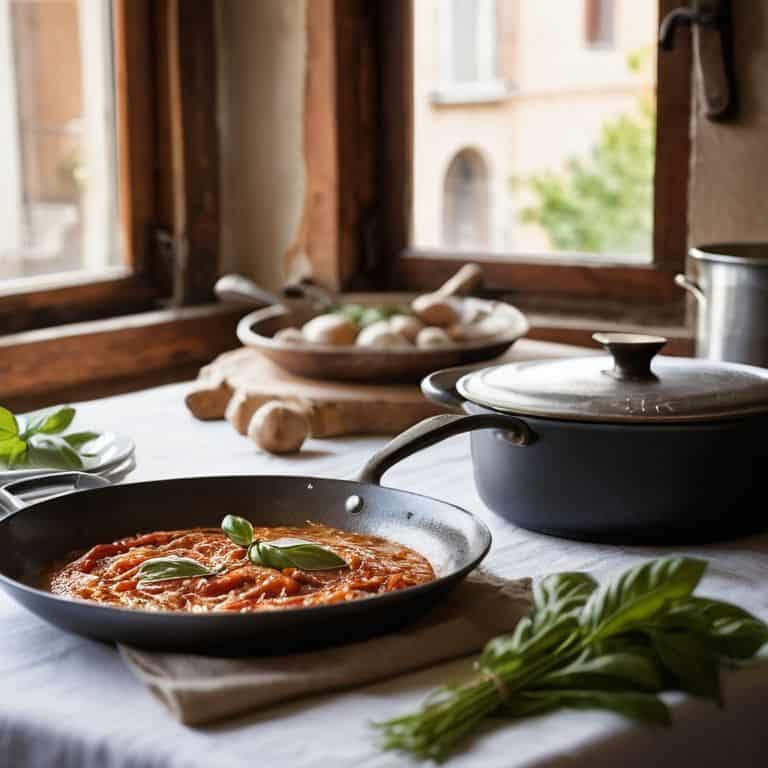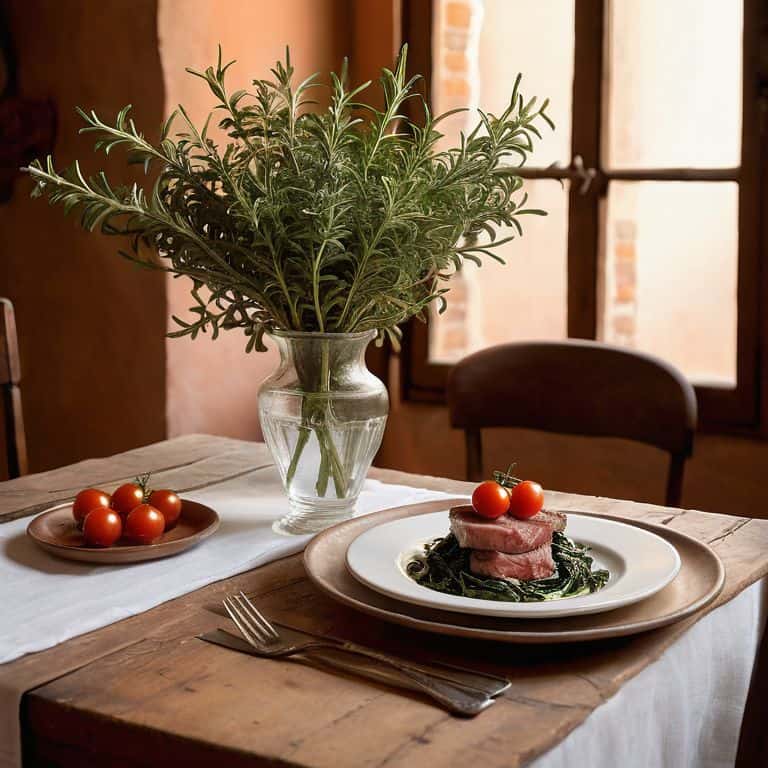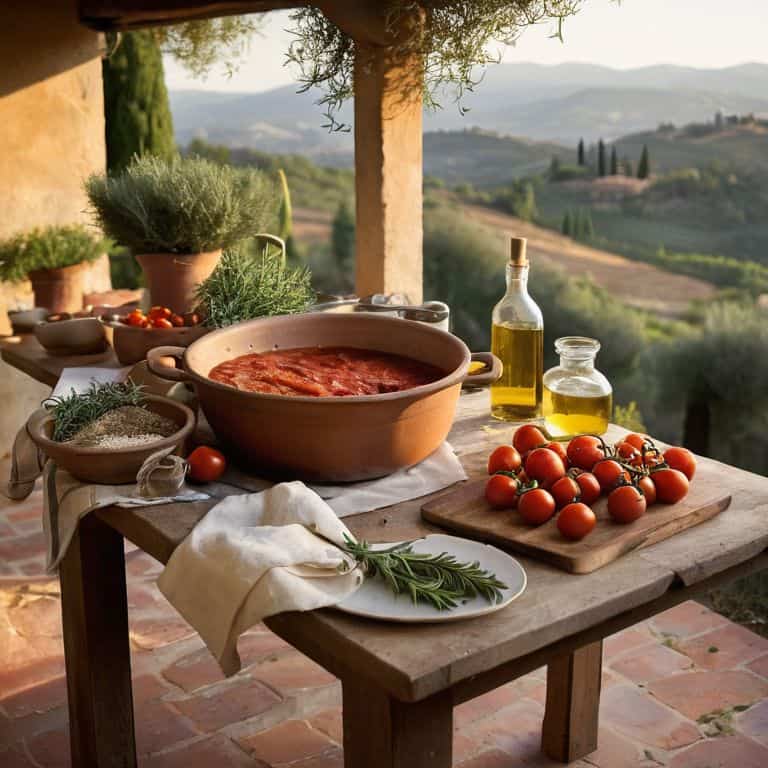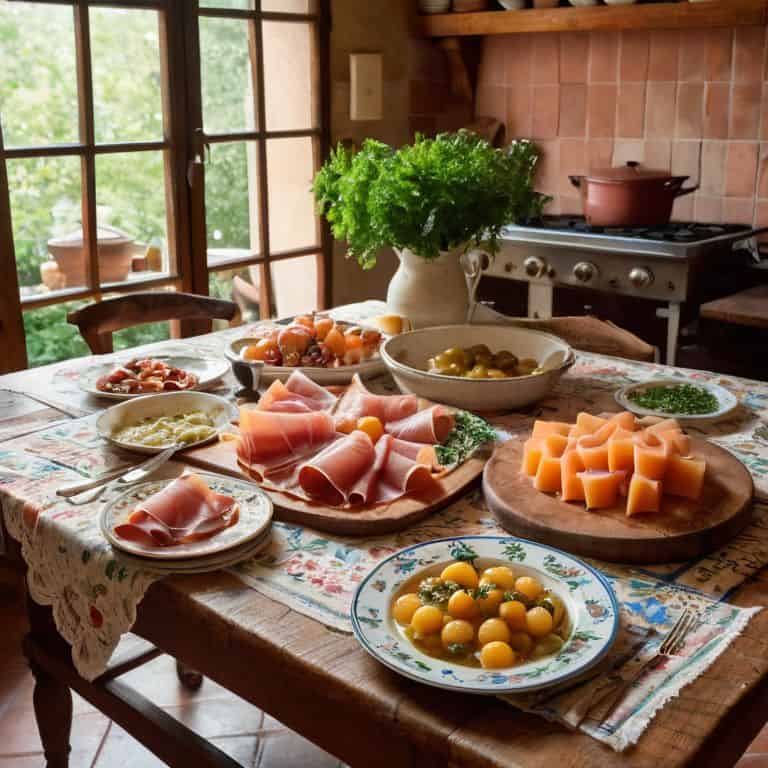As I sat on a plastic stool in a bustling Italian market, savoring a steaming plate of spaghetti Bolognese, I realized that the notion of a comprehensive a guide to italian food is often misunderstood. Many believe that Italian cuisine is all about fancy restaurants and complicated recipes, but the truth is, the heart of Italian food lies in its street food and traditional family recipes. I’ve spent years traveling the globe, collecting spices and learning to cook from grandmothers in every country I visit, and I can confidently say that Italian food is one of the most nuanced and rich cuisines out there.
In this article, I’ll share my personal story of discovering the authentic flavors of Italy, and provide you with honest, no-hype advice on how to bring a taste of Italy into your own kitchen. You’ll learn how to navigate the world of Italian ingredients, from the freshest produce to the finest olive oils, and how to prepare traditional dishes with ease. My goal is to give you a real guide to Italian food, one that goes beyond the tourist traps and fancy restaurants, and takes you straight to the heart of Italian cuisine. With this guide, you’ll be able to create delicious, authentic Italian meals that will transport you to the sun-kissed hills of Tuscany, and make you feel like you’re dining with Nonna herself.
Table of Contents
Guide Overview: What You'll Need

Total Time: 2 hours 30 minutes
Estimated Cost: $50 – $100
Difficulty Level: Intermediate
Tools Required
- Chef Knife (sharp, for chopping vegetables)
- Cutting Board (for food preparation)
- Large Pot (for boiling pasta, at least 12 inches in diameter)
- Colander (for draining pasta, with a diameter of 12 inches)
Supplies & Materials
- Pasta (dried, various types)
- Canned Tomatoes (for sauce, 28 ounces)
- Olive Oil (for cooking, 1 liter)
- Italian Seasoning (dried herbs, such as basil and oregano)
- Mozzarella Cheese (for pizza and caprese salad, 8 ounces)
- Fresh Vegetables (such as onions, carrots, and bell peppers, various quantities)
Step-by-Step Instructions
- 1. First, let’s start with the foundation of Italian cuisine: understanding the different regions and their specialties. I remember my first trip to Italy, where I discovered that each region has its own unique flavors and ingredients. For example, the north is known for its rich risottos and polentas, while the south is famous for its bold tomato sauces and fresh seafood.
- 2. Next, we need to explore the pantry of an Italian kitchen. This means stocking up on essentials like extra virgin olive oil, balsamic vinegar, and high-quality canned tomatoes. I recall visiting a small village in Tuscany, where the locals taught me the importance of using only the freshest ingredients and traditional products. When shopping for these ingredients, look for authentic Italian brands to ensure you’re getting the real deal.
- 3. Now that we have our pantry staples, it’s time to master the art of pasta making. From spaghetti to pappardelle, Italian pasta comes in a variety of shapes and sizes. I’ve had the privilege of learning from nonnas in different regions, and each has their own secret technique for crafting the perfect pasta dish. Start by investing in a good pasta machine and practicing with simple recipes like spaghetti aglio e olio.
- 4. With our pasta skills honed, let’s move on to the world of Italian sauces. From classic tomato sauce to creamy carbonara, there’s a sauce to suit every taste. I’ve found that the key to a great sauce is using high-quality ingredients and taking the time to reduce and simmer the flavors. Don’t be afraid to experiment with different combinations of herbs and spices to create your own unique sauce.
- 5. Next up, we have the magic of Italian cheese. With over 400 types to choose from, the options can be overwhelming, but don’t worry, we’ll focus on the essentials like parmesan, mozzarella, and gorgonzola. I recall visiting a cheese factory in Parmigiano-Reggiano, where I learned about the age-old process of crafting these iconic cheeses. When pairing cheese with other ingredients, remember that balance is key.
- 6. Now that we’ve covered the basics, it’s time to get creative with Italian street food. From crispy pizza al taglio to savory supplì, Italian street food is all about bold flavors and textures. I’ve had the pleasure of sampling street food from all over Italy, and I’m excited to share some of my favorite recipes with you. Start by experimenting with different types of dough and fillings to create your own unique street food creations.
- 7. Finally, let’s talk about the art of Italian dessert making. With classics like tiramisù and panna cotta, Italian desserts are all about simple yet elegant flavors. I’ve learned that the key to a great Italian dessert is using high-quality ingredients and taking the time to layer and chill the flavors. Don’t be afraid to get creative with different combinations of fruits and nuts to create your own unique dessert masterpieces.
A Guide to Italian Food

As I delved deeper into the world of Italian cuisine, I discovered the richness of tuscan cooking techniques, which emphasize simplicity and freshness. This approach allows the natural flavors of the ingredients to shine, creating dishes that are both hearty and refined. I recall a memorable meal in a small trattoria in Tuscany, where the chef’s use of traditional methods resulted in a truly unforgettable experience.
Italian food is deeply rooted in the country’s culture and history, with each region boasting its own unique ingredients and specialties. From the spicy peppers of Calabria to the rich truffles of Piedmont, every area has its own story to tell through its cuisine. As I traveled throughout Italy, I found that the best way to experience this diversity was by visiting local markets and best italian restaurants in rome, where I could sample authentic dishes and learn about the traditions behind them.
One of the most delightful aspects of Italian cuisine is its traditional italian dessert recipes, which often feature fresh fruits, nuts, and creamy cheeses. I remember learning to make a classic tiramisù from a lovely nonna in Venice, who shared with me the secrets of her family’s recipe and the importance of using high-quality ingredients. This experience not only broadened my understanding of Italian food but also deepened my appreciation for the country’s warm hospitality and rich culinary heritage.
Regional Italian Ingredients Revealed
As I wandered through the rolling hills of Tuscany, I discovered the secret to its unmistakable flavors. It’s all about the ingredients – fresh porcini mushrooms, fragrant extra-virgin olive oil, and rich Chianti wine. Each region in Italy boasts its own unique ingredients, shaping the character of its cuisine. From the Amalfi Coast’s succulent lemons to Piedmont’s prized truffles, every ingredient tells a story of the land and its people.
I recall a memorable encounter with a Tuscan farmer, who shared with me his prized possession – a basket overflowing with freshly picked sage and rosemary. The aroma was intoxicating, and I knew right then that these herbs would elevate any dish to new heights. Such regional treasures are the backbone of Italian cooking, and I’m excited to share more of these hidden gems with you.
Tuscan Cooking Techniques Uncovered
As I wandered through the rolling hills of Tuscany, I discovered the secrets of traditional Tuscan cooking. It’s all about simplicity and allowing high-quality ingredients to shine. I learned the art of preparing ribollita, a hearty soup made with vegetables, bread, and cannellini beans, from a local nonna. She taught me that the key to a rich and flavorful broth is to simmer it for hours, allowing the flavors to meld together. I also picked up tips on how to perfectly roast a chicken, or “pollo al mattone,” using a brick to weigh it down and crisp the skin.
These techniques, passed down through generations, are the backbone of Tuscan cuisine. By mastering them, you’ll be able to create authentic, mouth-watering dishes that transport you to the sun-kissed hills of Tuscany. Whether it’s a rich wild boar ragù or a simple yet satisfying panzanella, the essence of Tuscan cooking lies in its straightforward yet elegant approach to ingredients and preparation.
Savoring la Dolce Vita: 5 Essential Tips for Your Italian Culinary Journey
- Let the ingredients be your guide: Italian cuisine is all about simplicity and allowing high-quality ingredients to shine, so don’t be afraid to splurge on that extra virgin olive oil or Parmigiano-Reggiano
- Regional recipes are key: From the seafood stews of Liguria to the rich pasta dishes of Emilia-Romagna, each region in Italy boasts its own unique flavors and specialties, so be sure to explore beyond the usual suspects
- Never underestimate the power of a good sauce: Whether it’s a classic tomato sauce or a creamy carbonara, the right sauce can elevate even the humblest of dishes into a culinary masterpiece
- Italian food is all about family and tradition: So don’t be afraid to get creative and make recipes your own, just as nonna would have wanted – after all, the most important ingredient in any Italian dish is love
- Street food is the best food: From crispy pizza al taglio to creamy gelato, some of Italy’s most delicious eats can be found on the street, so be sure to wander, explore, and indulge in the local specialties
Bringing Italy to Your Table: 3 Essential Takeaways
I’ve learned that the true essence of Italian cuisine lies in its regional diversity, from the bold flavors of Tuscan olive oil to the delicate seafood of the Amalfi Coast, each dish telling a story of the people and places that crafted it
Through my travels and cooking lessons with Italian nonnas, I’ve discovered the importance of using high-quality, locally-sourced ingredients to bring out the authentic flavors of Italy, whether it’s a rich tomato sauce or a fragrant basil pesto
By embracing the Italian philosophy of ‘la dolce far niente’ – the sweetness of doing nothing – and taking the time to slow cook, to savor, and to share meals with loved ones, you’ll find that the real magic of Italian food lies not just in its taste, but in the memories and moments it creates
Savoring la Dolce Vita

For me, a true guide to Italian food isn’t about recipes or techniques, it’s about capturing the essence of nonna’s love, the chaos of a Italian market, and the simplicity of a perfectly cooked pasta dish – it’s a journey that awakens the senses and nourishes the soul.
Marco Bianchi
Savoring la Dolce Vita
As I reflect on our journey through the world of Italian cuisine, I’m reminded of the rich flavors and aromatic scents that have become synonymous with this beloved culture. From the Tuscan hills to the bustling streets of Rome, we’ve uncovered the regional ingredients and cooking techniques that make Italian food so uniquely delicious. Whether you’re a seasoned chef or a curious foodie, I hope this guide has inspired you to experiment with new recipes and flavors in your own kitchen.
As you embark on your own culinary adventures, remember that the true spirit of Italian food lies in its simple, yet profound approach to cooking. It’s about embracing the beauty of fresh ingredients, traditional techniques, and warm hospitality. So go ahead, gather around the table with loved ones, and let the flavors of Italy transport you to a world of la dolce vita – the sweet life.
Frequently Asked Questions
What are some essential Italian ingredients that I should always have in my pantry?
You know, I always say that Italian cooking is all about simplicity and quality ingredients. For me, essentials like extra-virgin olive oil, San Marzano tomatoes, and Parmigiano-Reggiano cheese are non-negotiables. Throw in some dried porcini mushrooms, basil, and a good pasta, and you’re ready to cook up a taste of la dolce vita!
How do I properly pair Italian dishes with wine for an authentic dining experience?
When pairing Italian dishes with wine, I recall my nonna’s wisdom: ‘The wine should kiss the food, not overwhelm it.’ For Tuscan ribollita, a dry Chianti is perfect, while a rich Barolo complements Piedmont’s braised meats. Let the region’s wine traditions guide you, and don’t be afraid to experiment – after all, la vita è bella, and so is the wine!
Can you share some traditional Italian dessert recipes that are easy to make at home?
The sweet treats of Italy! Let me tell you, my nonna’s Tiramisù is still a favorite. I’ve also got a soft spot for Panna Cotta and Zeppole – all easy to whip up at home. I’ll share those secrets with you, just like Nonna used to make.
